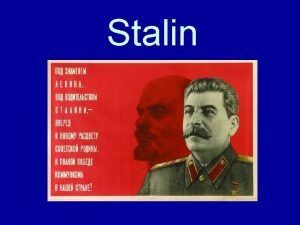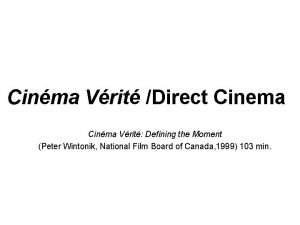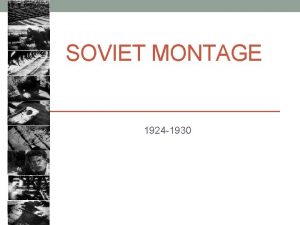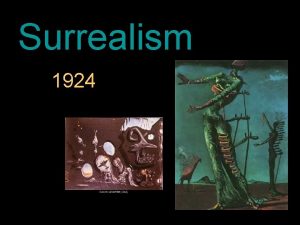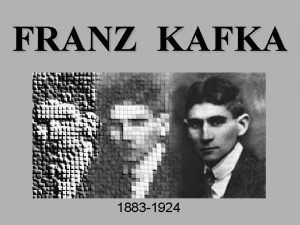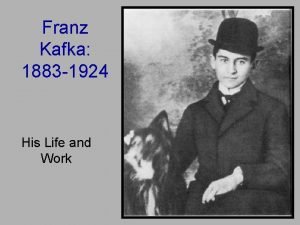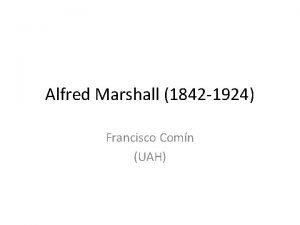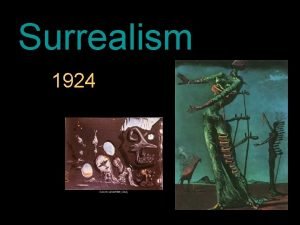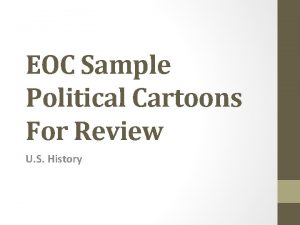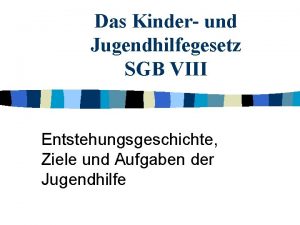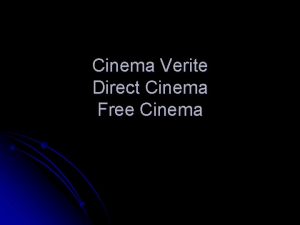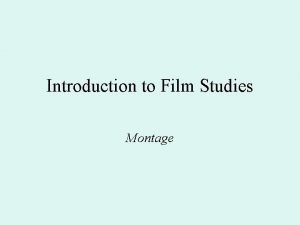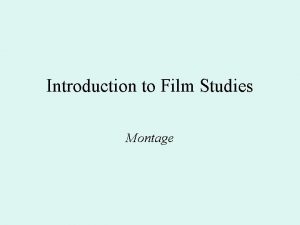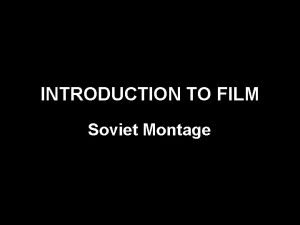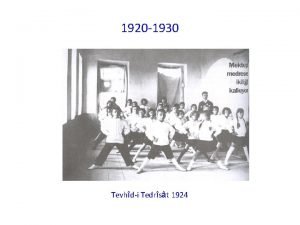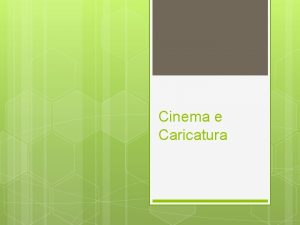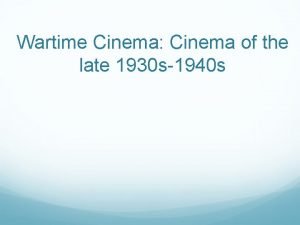SOVIET MONTAGE 1924 1930 Soviet Cinema in the











- Slides: 11

SOVIET MONTAGE 1924 -1930

Soviet Cinema in the 1920 s • Vibrant film culture after Russian Revolution • Lenin: cinema would be the most important art in the effort to reunite his nation • power to attract and instruct/indoctrinate • Influential developments in film theory: • Character and Society • Education/Propaganda • The Kuleshov Effect • Montage Editing

Soviet Film Theory: Character and Society • Downplay individual characters • characters are shown as members of society and of different social classes

Soviet Film Theory: Education/Propaganda • Nationalized film industry, established a national film school • All-Russian State University of Cinematography (VGIK) • Leaders saw film as key to involving all in political and intellectual revolution • Basic storyline: triumph of the people over bourgeois oppression “Art is not a mirror which reflects the historical struggle, but a weapon of that struggle” --Dziga Vertov (contemporary of Eisenstein)

Soviet Film Theory: The Kuleshov Effect • Lev Kuleshov teacher at VGIK • Central belief: the viewer’s response in cinema depends less on the individual shot and more on the editing or montage • Famous experiment with shot juxtapositions: • First shot: c/u of actor with neutral expression, then joined this shot to: • c/u of a bowl of soup • c/u of a coffin with a corpse • c/u of a little girl playing

…The Kuleshov Effect • Test audiences praised the actor’s versatility in showing hunger, sorrow, and pride, even though the shot of the actor remained exactly the same each time • Hitchcock (+) • Definition: One of the basic theoretical principles of editing – the meaning produced by joining two shots together transcends the visual information contained in each individual shot • (A+B=C)

Soviet Film Theory: The Montage • Believed in the power of montage: • manipulate the viewer’s perception and understanding • Audiences can derive meaning from juxtaposition of two completely unrelated shots

…The Montage • Meaning created by juxtaposition of shots, not the content of individual images • Sound and visuals can be treated independently or used together • Footage and music can be put together to increase the impact of a key shot • rhythm of music can accent the rhythm of editing/the montage (Marie A) (Rushmore)

Sergei Eisenstein • Strike (1924) • Battleship Potemkin (1925) • October (1927) • The General Line (1928) • equal to Griffith as a pioneering genius • financed by the soviet government

Sergei Eisenstein • regarded film editing as a creative and artistic process: • one shot (thesis) collides with another shot of opposing content (antithesis) to produce a new idea (synthesis) • forces the viewer to reach conclusions • Battleship Potemkin ~47 -52, ch 15 (or 3: 52)

And… • The History of Montage • “Best Montages Ever”
